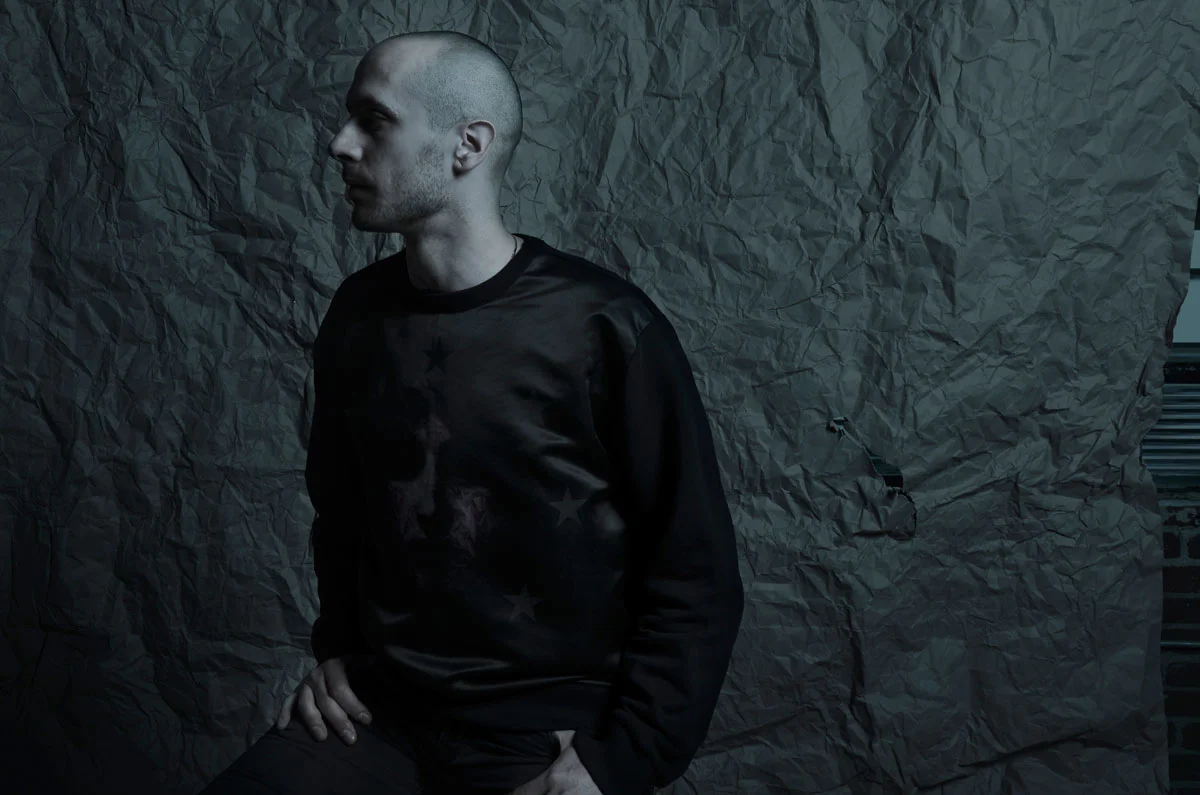
Photographer: Ian Morrison for Opusreps.com
[](#)[](#)
Maxime Büchi
Placed Into Abyss
Maxime Büchi is jetlagged following a work trip to Australia. As a result of this, conceivably, the tattoo artist/graphic designer expresses a bit of ambivalence about the peregrination. “It was a really nice place overall, but it was actually kind of disturbing. A lot of things were similar to England and America, but also very different at the same time. You think it’s what you know, but it’s actually a little bit different,” he notes, diplomatically leaving the statement unspecific.
After studying graphic design and typography at the École cantonale d’art de Lausanne in his native Switzerland, Büchi unceremoniously began a career in fashion. His early days were spent forging logos and corporate typeface for Damir Doma, Rick Owens, Balenciaga, and Mugler. It was only recently in his career that he began to apprentice under Filip Leu, the artist responsible for Büchi’s first tattoo. It was a transition foreshadowed by early work as a graffiti artist with a desire to leave an impact on physical space.
The physicality of the work, he concedes, can be calming. It’s also an opportunity for dialogue. “I think that the act of tattooing itself, is already a discourse on violence. It’s a violent act. I tattoo violent imagery sometimes. I personally am very attracted to extreme things. But then, we could discuss what exactly ‘violence’ is.”
Büchi’s work is monumental in context. Rooted in graphic design and architecture, it’s as much a voyage into phantasmagorical landscapes as it is a perusal through geometric shapes and repetition. Surrealism’s place in tattoo art is an apparent attraction for him. “There is now a sense of post-modernism in tattooing. People get tattoos that are not referring to anything except tattooing. Which is obviously a trap but is also quite interesting. Now when people get sailor tattoos, it’s no longer a reference to sailors; it’s a reference to sailor tattoos. It’s a way to strip down meaning. There’s an expression in French, _mise en abyme_ \[placed into abyss\], which becomes an abstraction in absurdity.”
In time, his creation of two magazines, _Novembre_ and _Sang Bleu_, effectively bridged the two facets of his art. “Graphic design and type design are related to my work. There are obvious connections, but they’re linked to my personality.” Recent expansions into brand collaborations, patent productions, illustrations, print designs—as well as his own acknowledgement that he’d like to eventually shift his focus to fine art—make it clear that the artist is still hunting for a way to solidify these intrinsic connections.
Büchi jumps between topics, adept at entertaining several conversational threads at once. He unravels a particularly dense inquiry on his relationship to clients, constructing his response into an equally close-packed answer on the correspondence between a tattoo artist and his patron and the parallels to “endogenous and exogenous” strands of therapeutic relationships. He categorizes the relationship itself as a “work tool” and a performative experience.
He begins to yawn audibly, uncontrollably, the day of traveling taking its toll. It seems polite to ask if he would like to conclude the conversation. His response comes quickly, and reflexively, “No, no. I’m easy, I’m okay to keep going.” Onward. The abyss awaits
